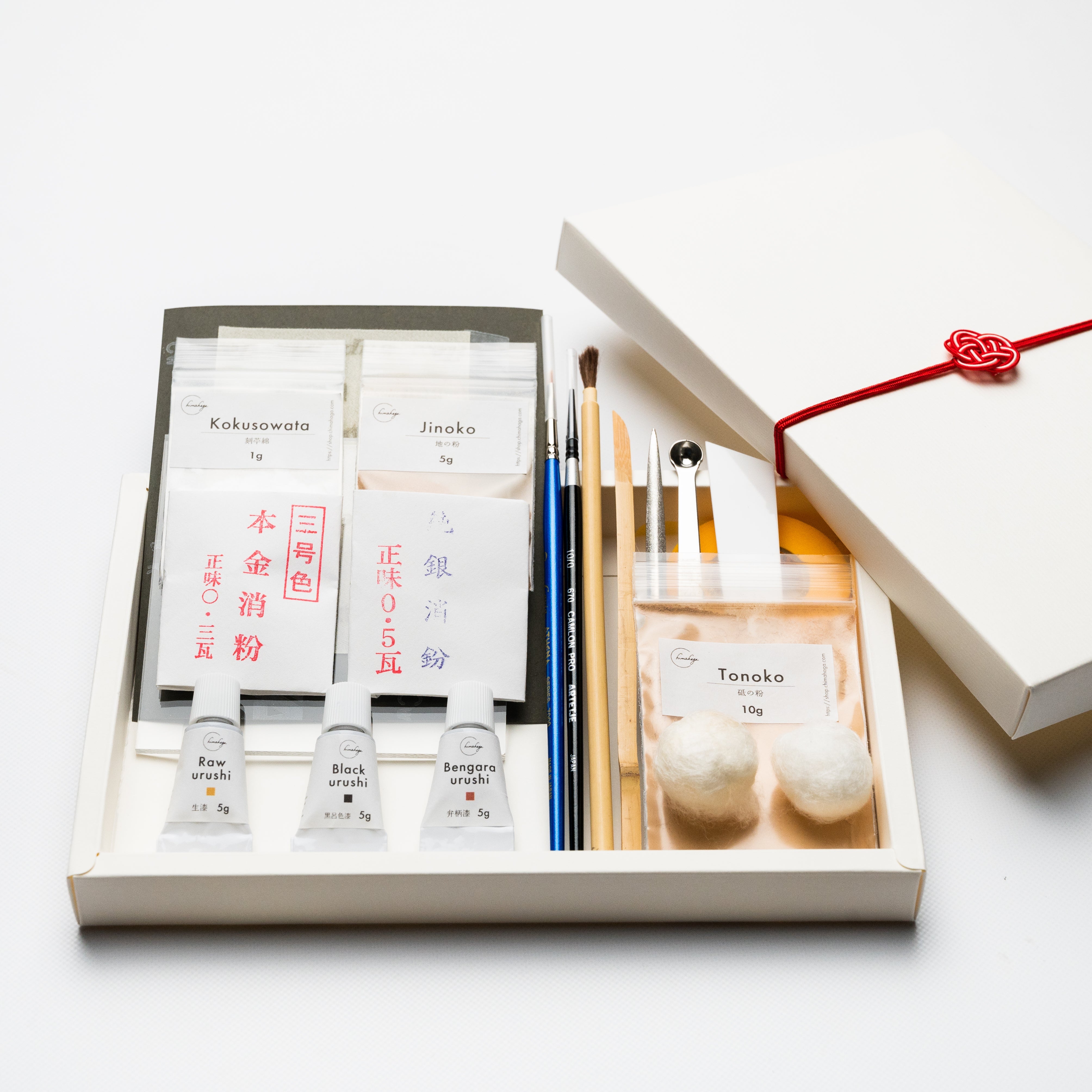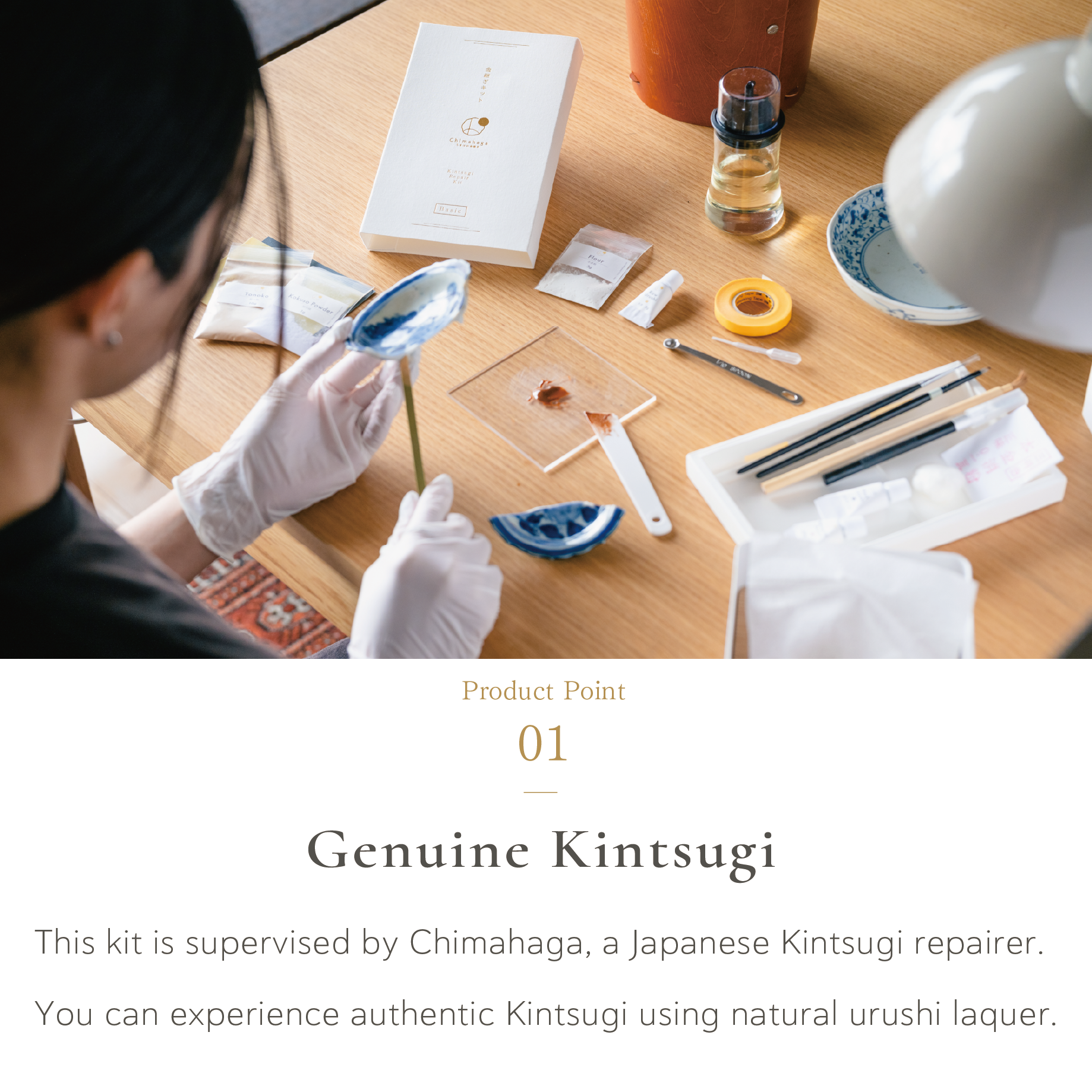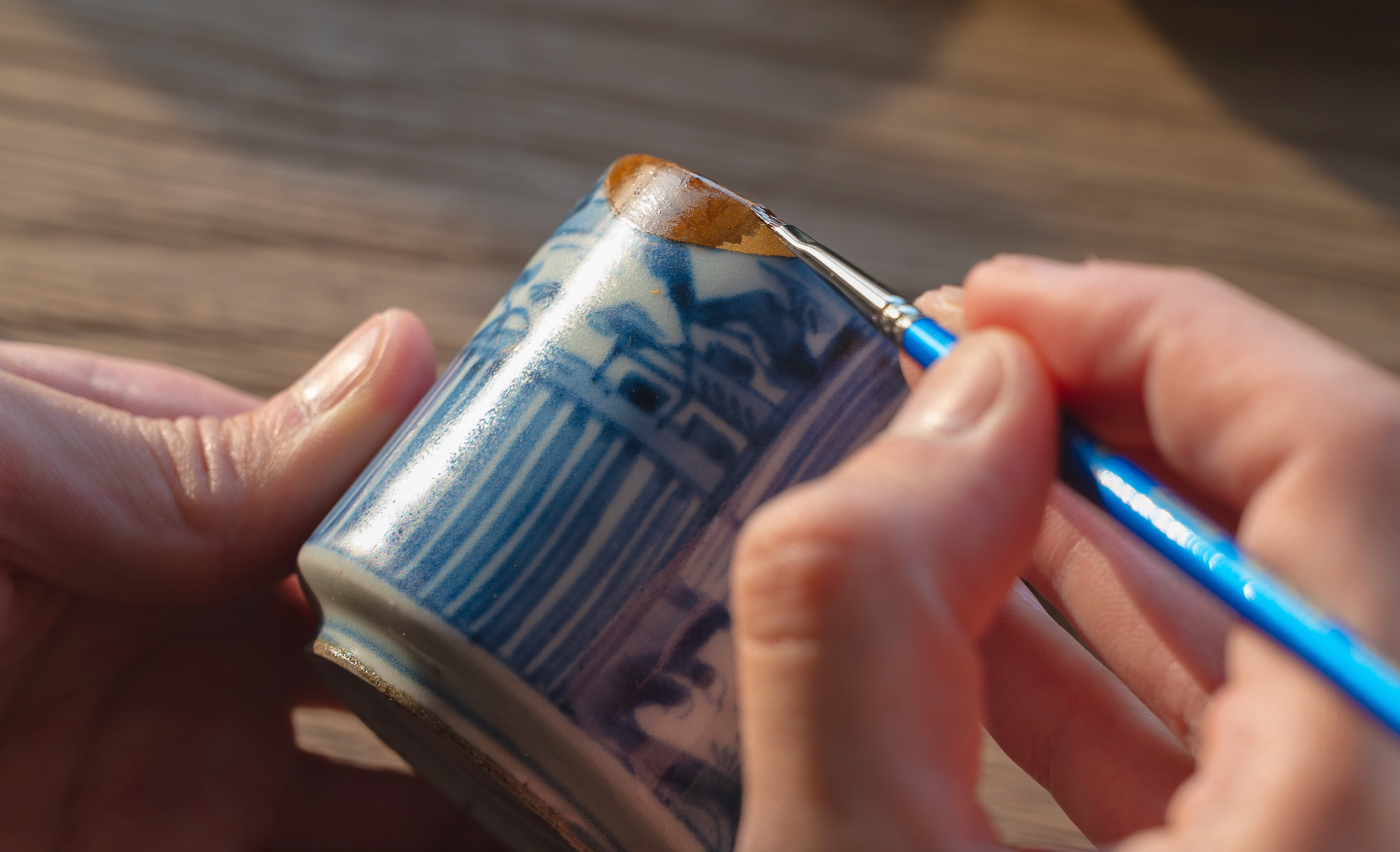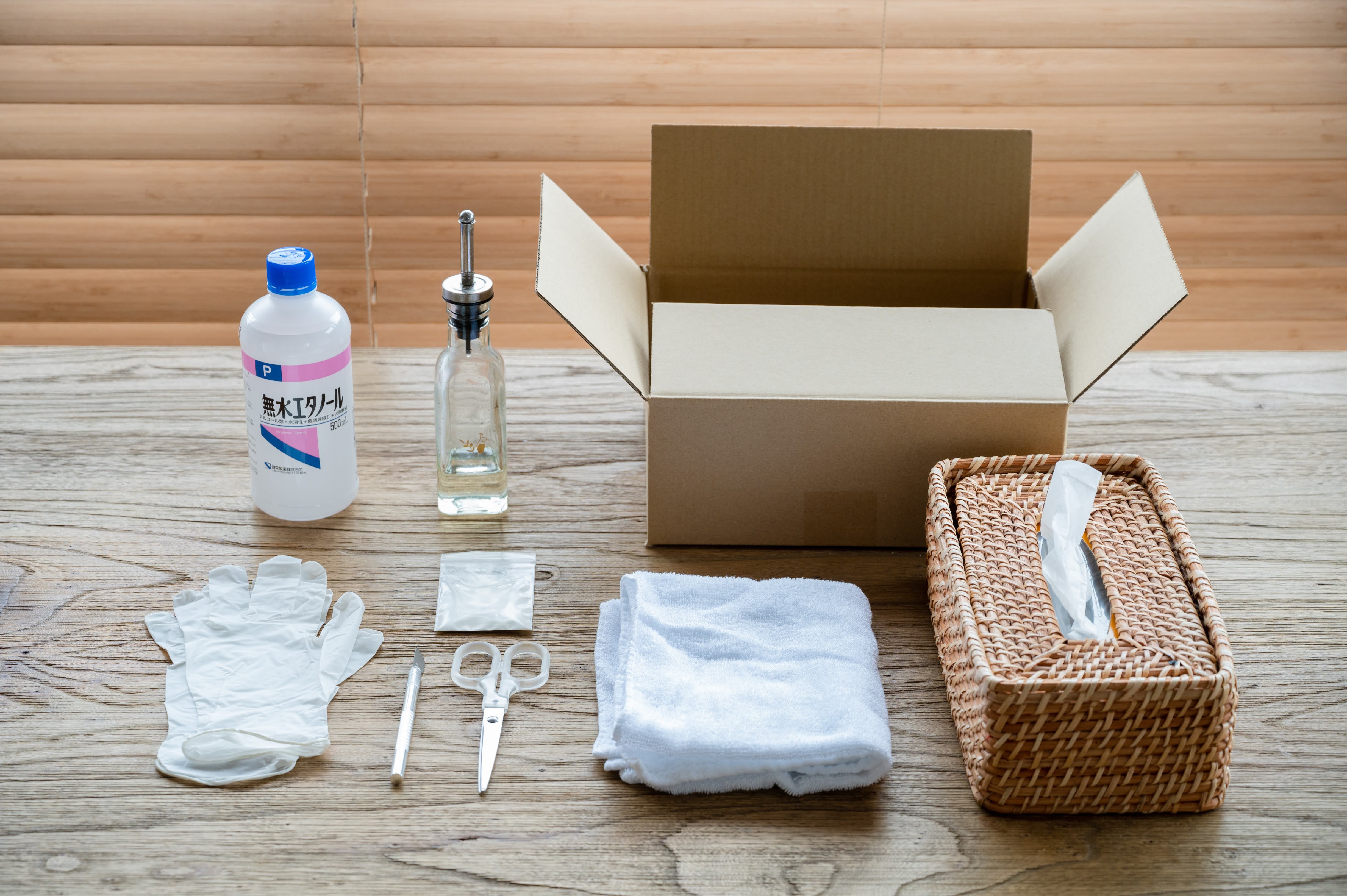





Standard Kintsugi Repair Kit
Tax excluded.
KIT INCLUDES
WHAT TO PREPARE
- Rubber gloves (rash prevention)
- Box cutter
- Scissors
- Tissue paper
- Cake flour
- Ethanol
- Vegetable oil (salad or rapeseed oil)
- Cardboard for storing ceramics to be repaired
- Wet towel
*It is possible to use isopropyl alcohol instead of anhydrous ethanol, but it has slightly less cleaning power for urushi lacquer, so we recommend using anhydrous ethanol if possible.
DISCLAIMER


This kit is supervised by Chimahaga, a Japanese kintsugi repairer.
You can experience authentic kintsugi using traditional Japanese techniques and materials.

This kit uses natural urushi lacquer and real gold, so it is safe to use on dishes.
It does not contain any epoxy resin or alternative gold powder that is harmful to the body.

Mizuhiki(水引き), a traditional Japanese gift wrapping technique, is attached to the package.
The red flower in the middle represents the ume bloosom, which is also used for celebratory occasions.
This kit is supervised by Chimahaga, a Japanese kintsugi repairer.
You can experience authentic kintsugi using traditional Japanese techniques and materials.
This kit uses natural urushi lacquer and real gold, so it is safe to use on dishes.
It does not contain any epoxy resin or alternative gold powder that is harmful to the body.
Mizuhiki(水引き), a traditional Japanese gift wrapping technique, is attached to the package.
The red flower in the middle represents the ume bloosom, which is also used for celebratory occasions.



No worries for beginners
We have prepared a free tutorial video so that beginners can try kintsugi themselves without fear.
Enjoy the kintsugi life!

KIT INCLUDES

WHAT TO PREPARE
- Rubber gloves (rash prevention)
- Box cutter
- Scissors
- Tissue paper
- Light flour
- Ethanol
- Vegetable oil (salad or rapeseed oil)
- Cardboard for storing ceramics to be repaired
- Wet towel
*It is possible to use isopropyl alcohol instead of anhydrous ethanol, but it has slightly less cleaning power for urushi lacquer, so we recommend using anhydrous ethanol if possible.
Which kit is made for you ?
Not sure which one to choose? We have prepared a brief comparison chart.


- Raw urushi (生漆)
- Bengara urushi (絵漆)
- Genuine gold powder 0.3g (The quantity is different)
- Plastic spatula
- Cotton
- Tonoko (whetstone powder)
- Acrylic Workbench
- Masking tape
- Sandpaper (#800)
- Fine abrasive sheet(#800)
- Diamond File
- Measuring spoon (0.1ml)
- Raw urushi (生漆)
- Bengara urushi (絵漆)
- Genuine gold powder 0.1g
- Plastic spatula
- Cotton
- Tonoko (whetstone powder)
- Acrylic Workbench
- Masking tape
- Sandpaper (#800)
- Fine abrasive sheet(#800)
- Diamond File
- Measuring spoon (0.1ml)
For Gintsugi (silver repair)
- Black urushi (黒呂色漆)
- Genuine silver powder 0.5g
For more precise work
- Black urushi (黒呂色漆)
- Fine-point brush
- Flat brush
- Ashirai Brush
- Bamboo spatula
For more failure-resistant and durable
- Kokuso wata (Cotton powder)
- Jinoko (Rough whetstone powder)
For easy challenge
- Standard brush
- Wood powder
FAQ
Is it true that Urushi can cause a rash?
Does the Urushi Lacquer lose its allergenic properties after it has cured?
Can Isopropyl alcohol be used in place of Ethanol?
Is it ok for hot liquids or foods?
How many items can be repaired with the STANDARD kintsugi kit?
Is kintsugi appropriate for a glass item?
Can I use my ceramic with kintsugi in the microwave?
Can I purchase from outside Japan?
This product is rated 4.6 of 5.0 stars.
It has received 11 reviews.